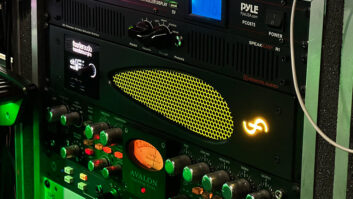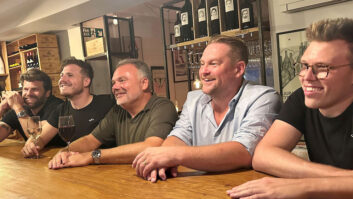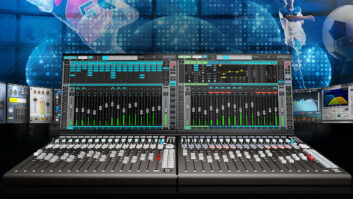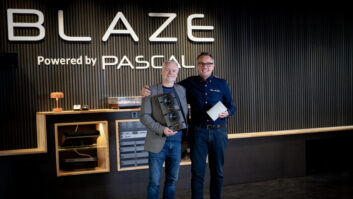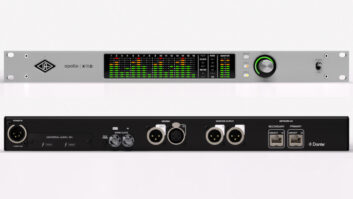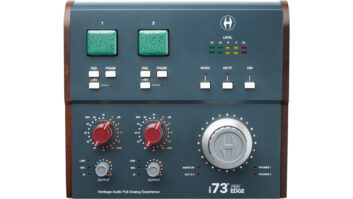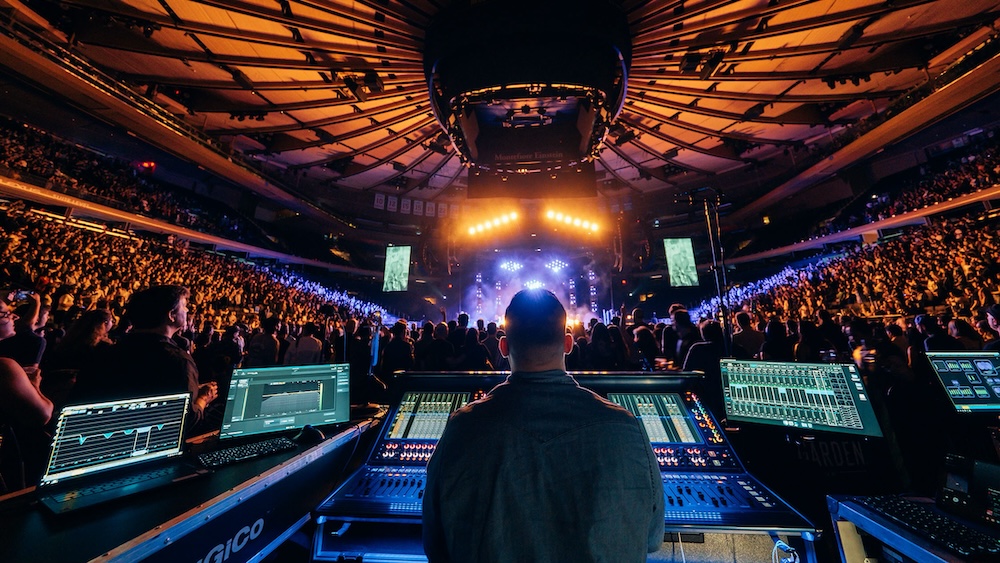
New York, NY (October 4, 2024)—It was a year ago that Fourier Audio unveiled its transform.engine plug-in server to the industry at the AES Show in New York, as it almost simultaneously announced it had been purchased by Audiotonix. Just about a year on, the transform.engine is starting to turn up at FOH mix positions, and among the first U.S. tours to take one on the road has been Cage The Elephant. Pegged to open for Oasis’ high-profile U.S. reunion run in 2025, the Grammy-winning rock band spent this summer on the road, tearing through 45 shows on its Neon Pill tour. Putting that transform.engine to good use nightly was front-of-house engineer, Ashton Parsons.
Parsons added the transform.engine to the control package for the tour, which included a DiGiCo Quantum338 FOH console and a DiGiCo Quantum5 desk used by monitor mixer Patrick Moore, all provided by Clair Global.
“The transform.engine was on my radar when it was first announced and I put in a request for it back in April when I was spec’ing gear for the tour,” Parsons recalls. “Just before the first festival dates ahead of the tour—the first one was Hangout in Gulf Shores, Alabama in mid-May—Clair approved the software and hardware for touring. I am super grateful to have had it; so many audio nerds have come up to ask me questions about it on show dates and online once word got out that I had it.”
A Dante-connected server designed to run VST3-native software plugins in a live environment, the Fourier Audio transform.engine is specifically designed for live productions. As a result, Parsons was able to use nearly all his preferred plug-in processors, including a Fab Filter Q3 dynamic equalizer that he applied to most of the guitars as well as the master bus.
“I’ve also been using some of the Audioscape plug-ins, Brainworx/Plugin Alliance, and Sound Theory’s Gullfoss Live low-latency resonance-suppressor plug-in, because with this band, there’s a lot of crazy intentional noises happening on stage, and it’s keeping those in check,” he says. “They’re a rock and roll band—there’s no click and they have a lot of guitar pedals; the band is always changing their settings. There’s a lot going on in terms of tonality, so having the ability to process them using some more advanced plug-ins that previously hadn’t been available live has been fantastic. In addition, I’ve been able to make use of plug-ins that they used in the studio to recreate certain vocal effects for this tour, which they’ve been very happy with.”
Parsons expects to integrate Fourier’s new v1.2 Cuelist software, specifically allowing users to recall cues (a.k.a. snapshots) over a MIDI connection from either a mix console or show-control software, in the near future.
“I’m still on transform.engine v1.0 software at the moment, as I got one of the first units that Clair shipped out after they were satisfied with the software being stable, back in May. I don’t like updating firmware mid-tour, just in case something goes awry, but I will be taking it out on the next leg of shows and I’ll definitely get it updated to v1.2. Having Cuelists will be awesome. I’m also looking forward to that functionality where I’m able to click the channel and the plug-in pops up on the screen at the desk with the snapshots and other parameters.”
